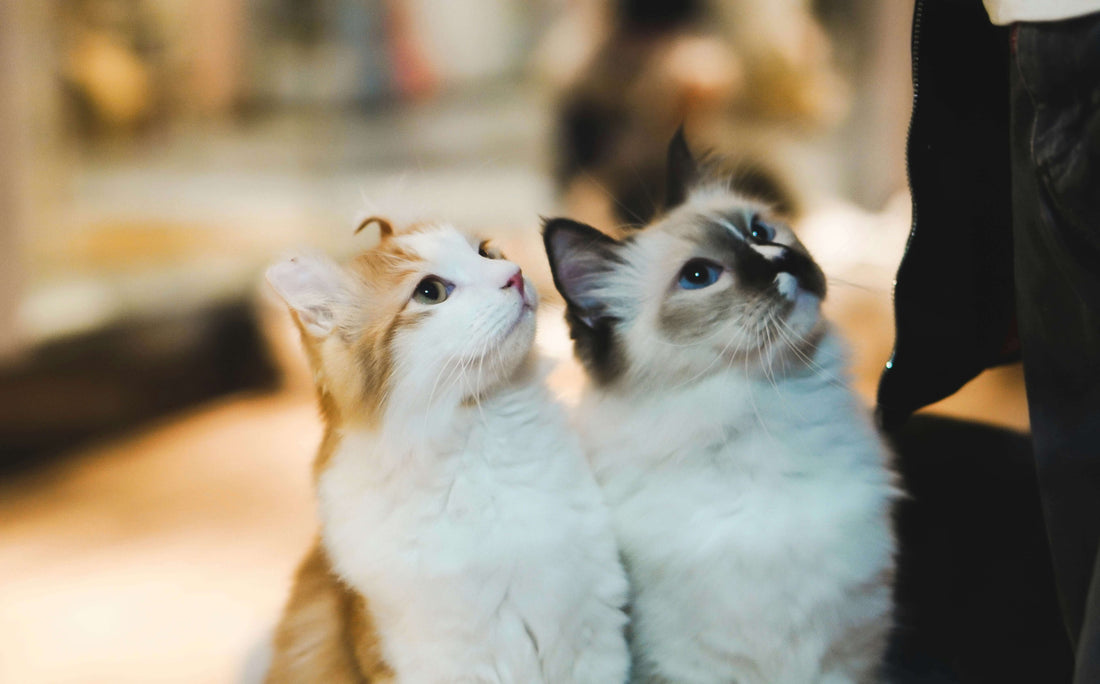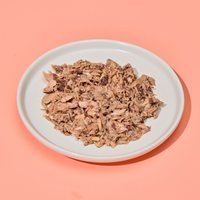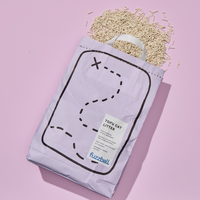Feeding Multi-Cat Households: How to Keep Mealtimes Stress-Free

Feeding one cat is pretty straightforward, but throw a few more into the mix, and things can get chaotic fast. Between food stealers, picky eaters, and those who like to shove their siblings out of the way, mealtimes in a multi-cat household can turn into a full-blown wrestling match. The good news? With the right setup, a bit of patience, and a few smart strategies, you can turn feeding time from a stress-filled frenzy into a smooth and peaceful part of your day.
Can Cats Eat Together?
Many cats prefer to eat alone, but some cats may eat contentedly together, particularly if they are littermates or have grown up together. If there isn't enough food or if cats have a history of fighting, forcing them to eat close to one another can be unpleasant and cause rivalry and violence.
When Should I Feed Cats Separately?
Feeding cats individually might sound like a hassle, but in some cases, it’s absolutely the right move. If one of your cats is overweight or has a medical condition, they’ll likely need a special diet or carefully managed portions which can be difficult to control in a group feeding situation. The same goes for cats who take medication with their food, you definitely don’t want another whiskered roommate eating something they are not supposed to.
Other reasons to feed your cats separately include, food aggression, bullying at the bowl, or even just different age groups, kittens and senior cats for example can have different nutritional needs. A bit of planning around mealtimes can help everyone stay healthier, happier, and more relaxed at dinner.
How Can I Put One Cat On a Diet In a Multi-Cat Household?
Separating feeding times and locations is a must when putting one cat on a diet in a household with multiple cats as this prevents other cats from getting to the diet food. This can be accomplished with simple low-tech techniques, such as feeding in separate rooms, or more technically with high-tech smart feeders that use collars or microchips to limit access.
How Can You Keep Two Cats From Eating Each Other’s Food?
Feed your cats in separate locations or use a microchip feeder to stop them from eating each other's meals. Supervising mealtimes or feeding your cats at slightly different times can also help prevent food stealing. Another great solution is to introduce puzzle feeders, which slow down fast eaters, giving all your cats the chance to finish their food calmly and at their own pace.

What Are the Issues With Feeding Multiple Cats at the same time?
There are many reasons you may need to employ special tactics at mealtimes, and the solutions may vary based on your issue. Here are some of the issues:
|
Issue |
Description |
|
Food Stealing |
It’s not about greed—it's instinct. Cats don’t naturally understand the concept of “my bowl vs. your bowl.” To them, food is food. |
|
Food Aggression |
This usually stems from past food insecurity. Guarding food is their way of protecting what they see as a valuable resource. |
|
Food Anxiety |
Some cats are too nervous to eat around others, especially if there's tension between pets or a general sense of unease at mealtime. |
|
Different Eating Styles |
Some cats like to graze slowly, while others eat quickly. Cats with food anxiety might eat everything in sight—even if it’s not theirs. |
|
Medications & Supplements |
When specific cats need food-based meds or supplements, it’s crucial to ensure only the right cat eats from the right bowl. |
Why Should I Feed My Cats Separately?
In a multi-cat home, feeding cats individually can enhance their general well-being by lowering stress, competition, and possible health problems associated with food consumption and behaviour. It makes it possible to keep a closer eye on each cat's appetite and eating patterns, which can help spot and treat possible health issues including weight gain, overeating, or undernutrition.
How Can I Keep Mealtimes Stress-Free In a Multi-Cat Household?
To keep harmony in your household and help keep both of your cats healthy and stress free, it’s important to know how to feed two cats separately, or how to feed two cats when one overeats.
Here’s some guidance on stress-free multiple-cat feeding, or how to stop a cat from eating other cats’ food.
Monitor the Situation
Watch for signs that your cats are feeling stressed at mealtime. Look for anxious behaviours such as vigilant looking around, ears flattened or sideways from the head or approaching food with caution. If you know which cat is dominant and which is more submissive, make sure that one cat doesn’t assert command over a feeding area, making the other cat feel nervous about eating.
Creating Separate Feeding Spaces
Feeding multiple cats can be accomplished with a multiple cat feeding station or a separate area with food and water for each cat. Feeding areas can be created by simply placing each cat’s food and water bowls at a distance from each other. In some cases, visual distancing might also be needed so that cats don’t see each other while they eat. This may involve feeding each cat in a separate room or placing bowls in areas of different heights.
Create Separate Feeding Times
For cats who like to eat on different schedules, another way to create separation is through an electronic feeding bowl that can be programmed to dispense food at different times, or a dispenser feeder that utilises individual microchips attached to each cat’s collar, which signal food to be dispensed upon approach.
Satisfying Hunting Instincts Through Puzzle Feeders
Cats who display a need to hunt and search for food, or anxiety around mealtime can benefit from puzzle feeders. Portioning food in small meals at different times during the day can also help satisfy their instinctual needs and help alleviate stress.
Use Automatic Cat Feeders
But what if your cats need to eat when you’re not around or you’re too busy to monitor mealtimes? Have no fear, technology has come to the rescue. You can equip each of your cats’ feeding stations with a microchip- or RFID-enabled automatic feeder that opens and provides food only when a particular cat approaches.
What Is the Best Feeding Schedule For a Multi-Cat Household?
Typically, cats should eat at least two meals each day, 12 hours apart. So this could include breakfast, lunch, afternoon, dinner, and a before-bed schedule. Bear in mind, if there are more than 12 hours between meals, this can result in stomach issues causing hyperacidic and nausea. Longer gaps between meals can also lead to over-eating.
For most owners of multiple-cat households, making the transition to scheduled meal feeding can take some time. But with patience and lots of love and attention, your feline friends will be comfortable with the new routine. Remember to stick to it and mealtimes will run smoothly. Plus, it will make delicious mealtimes and treats something for your cat family to look forward to!
What If All My Cats Are Free Feeding?
If your group of felines have become accustomed to eating food when they feel like it, the transition to set meal feeding can take some getting used to.
Firstly, plan out a mealtime schedule and the number of meals you can provide a day. Typically, most cats aged from six months to maturity can be fed twice a day. Then you’ll need to consider the location of each cat, showing them where they will now be eating on a daily basis. Cats don’t usually like to eat near their litter tray, so it’s ideal to place bowls a few feet away from the litter tray. You might find the best cat treats can be a great (and tasty) incentive for an easy transition!
Feeding time doesn’t have to be a battleground just because you’ve got more than one cat. With a few simple changes, like setting up separate spaces, using smart feeders, or switching to a scheduled routine, you can keep things calm and make sure everyone gets their fair share. Every cat is different, so it might take a bit of trial and error, but once you find a setup that works for your crew, mealtimes can become one of the easiest and most peaceful parts of your day.





